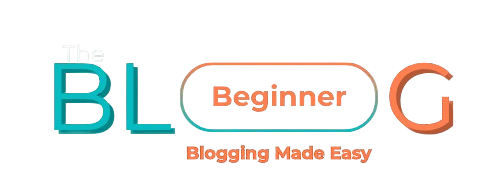On-Page SEO: Simple Steps to Make Your Blog Posts Rank Higher
Table of Contents
You’ve written a great blog post… but will anyone find it on Google?
That’s where On-Page SEO comes in.
It’s the art of optimizing every part of your content — right inside the post — so search engines know exactly what it’s about.
Let’s break it down in a simple, human way 💡
🧠 What Is On-Page SEO?
On-Page SEO is everything you do within your blog post or page to help it rank better on search engines.
This includes:
- Using keywords
- Formatting content
- Adding internal links
- Writing strong titles and descriptions
- Structuring headings properly
If Google can understand your content, it can show it to the right people.
🔑 Start with a Strong Focus Keyword
Choose one main keyword that your post is targeting — like “start a blog” or “on-page SEO for beginners”.
Use it naturally in:
- Your title (H1)
- Your first paragraph
- At least one H2 heading
- Your meta title & meta description
- The URL (slug)
📌 Tip: Don’t force it. Write for humans first — and search engines second.
🏷️ Write a Click-Worthy Meta Title and Description
These are what people see in Google results — so make them count!
- Meta Title: Around 60 characters
- Meta Description: Around 150–160 characters
- Include the focus keyword
- Make it enticing so people want to click
💬 Example:
“On-Page SEO Made Simple – A Beginner’s Guide to Better Google Rankings”
🧱 Use Proper Headings (H1, H2, H3)
Structure matters!
- Use H1 for your main title (once per post)
- Use H2 for main sections
- Use H3 for sub-sections under H2s
✅ This helps both readers and search engines understand your content.
🔗 Add Internal and External Links
Internal linking = gold for SEO 💰
- Link to other helpful posts on your site
(like our guide to Keyword Research) - Link to trusted external sources (like Moz or Google)
This builds relevance, keeps readers on your site longer, and boosts your rankings.
🖼️ Use Images with Alt Text
Images make your post more engaging — but don’t forget to:
- Compress images for faster load speed
- Use descriptive Alt Text that includes your keyword
- Add relevant file names (e.g., on-page-seo-guide.webp)
📱 Make It Mobile-Friendly
- Use short paragraphs and bullet points
- Keep font size readable
- Use buttons and images that scale well on phones
- Test your post on mobile before publishing
📏 Improve Readability and Flow
Search engines prefer content that’s easy to read:
- Use short sentences and clear language
- Add spacing between paragraphs
- Use bold and italic to highlight important points
- Keep your tone natural and helpful
📌 Bonus Tip: Use tools like Hemingway Editor to check your writing flow.
🧰 On-Page SEO Tools to Help You
Here are some beginner-friendly tools:
- Rank Math SEO – plugin to optimize titles, descriptions, and more
- Yoast SEO – alternative SEO plugin
- Grammarly – fix grammar & clarity
- Google Search Console – track your performance
- PageSpeed Insights – check site speed
💬 Final Thoughts
On-Page SEO isn’t about tricking Google — it’s about making your content clear, helpful, and easy to understand.
Focus on writing for humans, follow these simple steps, and you’ll set yourself up for long-term SEO success 🔥
📌 Ready for more?
Check out our guides on:
